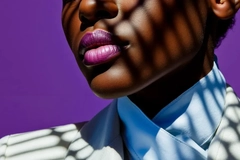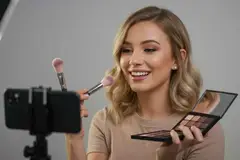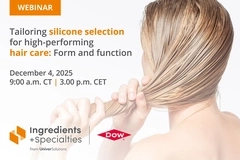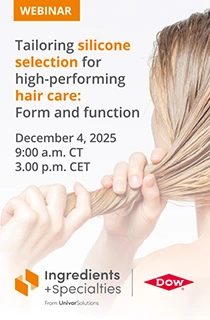Age of social media: Generational differences and tech drive beauty trends
Key takeaways
- Biotechnology transforms the personal care industry by enabling more personalized, sustainable, and efficient product development.
- Younger generations drive trends like clean labels, preventative skin care, and hybrid products.
- Global trend variations highlight regional preferences for innovations, such as lightweight sun care in Asia and minimalistic formulas in Europe.
Rapid technological development is causing trends in personal care to shift faster than ever. Digitally savvy younger generations increasingly use social media to guide and rate their skin care purchases, a tool unbeknownst to previous generations. This generational difference in product–consumer relationships pushes beauty formulators to innovate in accordance with age.
Personal Care Insights sits down with experts from Kenvue, Kensing, and Innova Market Insights to discuss how personal care trends differ between generations and how technology drives product innovation and consumer demand.
Younger consumers, such as Gen Alpha, are exploring skin care and cosmetics earlier than previous generations.
“They are highly educated on skin care from social media, and many millennial parents are being educated on the importance of skin care,” says Adam Ricciardone, global head of R&D Skin Health and Beauty at Kenvue.
He explains that preventative skin care is most prominent at a young age in Asia-Pacific markets, but it is emerging in other markets, with consumers becoming more educated about preventative skin care ingredients, treatments, and the importance of sun protection.
“This generation, also called the ‘pre-aging’ consumer, is willing to use skin care approaches to protect, preserve, and boost their naturally youthful and healthy skin.”
Younger consumers joining in
Ricciardone says while these young shoppers are buying into age-related solutions, there is also a growing focus across all ages on longevity and healthy skin aging. He believes this drives a new narrative addressing the key hallmarks of skin aging.
“This is creating an exciting time in dermatologic skin care as we research and develop new technologies to promote skin health and longevity. DIY (do it yourself) treatments or ‘tweakments’ like masks are trending as consumers are interested in more convenient and affordable skin care treatment options that aren’t invasive,” says Ricciardone.
Eva Criado, senior marketing and communications manager, Kensing, agrees that younger audiences are becoming interested in skin care thanks to social media.
She says green chemistry and natural ingredients are trending for younger consumers. “I’ve noticed that Gen Z and millennials are especially vocal about wanting clean labels, full transparency, and sustainably sourced ingredients. I think that’s pushing the whole industry in a better direction.”
“This shift has sparked the creation of brands specifically for kids and pre-teens, focusing strongly on safety, gentle ingredients, and teaching good skin habits early on.”
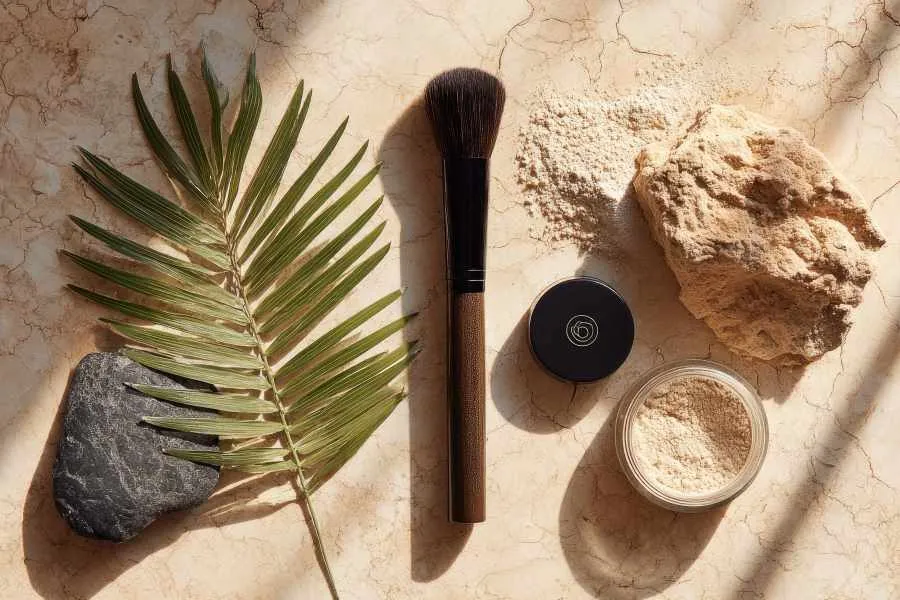 Gen Z and millennials are especially vocal about wanting sustainably sourced ingredients.She adds that, despite targeted innovation, she is concerned about children and teenagers using products with poor quality and artificial ingredients, which could damage their skin.
Gen Z and millennials are especially vocal about wanting sustainably sourced ingredients.She adds that, despite targeted innovation, she is concerned about children and teenagers using products with poor quality and artificial ingredients, which could damage their skin.
Earlier this year, a study reported that young girls following beauty advice on TikTok may harm their skin by being encouraged to adopt intensive routines meant for adults. The study found that girls aged seven to 18 use, on average, six skin care products and have a routine exceeding 10 minutes, using products mainly created for mature skin.
“This is an issue that our industry must address and prevent. At Kensing, we are proud to use plant-based and upcycled ingredients, which are available in multiple formats and support flexible formulation and consumer demand for natural products,” says Criado.
Tech takes center stage
Sugandha Bandyopadhyay, project lead for Beauty, Personal Care, and Household at Innova Market Insights, tells us that tech and science-based innovations are increasingly taking center stage in personal care.
“[Technology and science] tap into modernization, precision, and luxury appeal regarding trends and preferences. Encapsulation and microencapsulation are especially important as these membranes can help enhance active ingredient delivery to the target areas and increase shelf life,” says Bandyopadhyay
Encapsulation technology can help reduce the sensitivity reactions for some ingredients, such as retinol. The anti-aging active occupies a mid-sized market in global personal care and is growing at +13% CAGR from 2020 to 2024, according to Bandyopadhyay.
Beauty formulators have been developing solutions for retinol that cater to sensitive skin users. These consumers want to reap the benefits of the ingredients without its harshness. For example, Image Skincare recently launched its Ageless+ retinol, a collection of retinol suitable for all skin types, including sensitive.
Kensing’s Criado adds that formulation science is moving at “lightning speed.”
“I find encapsulation and advanced delivery systems especially fascinating — they’re key to keeping sensitive actives like retinol or antioxidants stable and ensuring they work exactly when and where you need them.”
Meanwhile, Ricciardone says biotechnology is growing as an alternative to traditional ingredient sourcing and manufacturing.
“The field of biotechnology offers innovation opportunities, including areas like enhanced product efficacy and personalized skin care.”
 Criado says that formulation science is moving at lightning speed.Biotech has previously been referred to as the future of personal care, due to the increasing concerns about land use and food competition. Biotechnology removes the need for natural resources while also speeding up production processes.
Criado says that formulation science is moving at lightning speed.Biotech has previously been referred to as the future of personal care, due to the increasing concerns about land use and food competition. Biotechnology removes the need for natural resources while also speeding up production processes.
Bandyopadhyay also points to psychodermatology as a development opportunity in the cosmetics industry. Psychodermatology works to explore the skin-mind-body balance. Both natural and lab-grown actives, including adaptogens, are in focus for neurocosmetic applications.
Illuminating this trend, Oriflame recently found that consumers’ main goal from the beauty industry is to feel emotionally supported, connected, and in control. The skin care brand’s first Beauty and Wellbeing Report revealed that 71% of consumers believe society overemphasizes physical appearance, and instead, individuals place a greater value on self-confidence (47%) and happiness (36%).
Hybrid makeup trending
Criado shares that makeup solutions are tapping into skin care ingredients, reflecting the “skinification” trend.
“People want hybrid products that care for their skin while adding color. Ingredients like vitamin E, niacinamide, peptides, and ceramides are popping up in various formulas, even foundations and lip products,” she says.
Ricciardone notes that duplicate culture, referred to online as “dupes,” is popular as consumers seek efficacious skin care and makeup products at a more affordable price.
Other trends he flags are “no makeup” makeup, and skin care-like makeup. Ricciardone says that consumers seek an effortless, natural look without looking like they have a lot of makeup on that also delivers skin care benefits.
Ricciardone also says that lip care is trending in cosmetics and skin care as consumers seek plumper, hydrated, and healthy-looking lips, leading to a rise in lip oils, masks, stains, plumpers, and treatments.
Bandyopadhyay adds that there is a rapid rise in lip treatment stains that offer lip barrier-promoting benefits, such as peptides or ceramides, while also having color.
She also details that consumers seek multi-tasking, quick routines, especially for makeup.
“Multi-tasking products have seen their fair share of innovations in personal care. This is especially relevant in makeup, such as face products, multi-functional BB creams, and foundations with a primer base.”
Trends across borders and generations
Trends often differ between geographical regions.
“Asia, particularly Korea and Japan, always impresses me with their innovation and incredible textures. Their lightweight, functional sun care formulas, which incorporate ingredients such as natural Vitamin E and focus on personalizing skin care, are truly inspiring,” says Criado.
 Cosmetic trends across regions are based on various factors such as age, gender, and culture.“In Europe, I see an emphasis on dermo cosmetics, green chemistry, and sustainability, along with some of the strictest safety standards anywhere. I appreciate their preference for minimalist, science-backed formulas; they set a high bar for everyone.”
Cosmetic trends across regions are based on various factors such as age, gender, and culture.“In Europe, I see an emphasis on dermo cosmetics, green chemistry, and sustainability, along with some of the strictest safety standards anywhere. I appreciate their preference for minimalist, science-backed formulas; they set a high bar for everyone.”
She says that in North America, trends are shaped by influencers and the clean-beauty movement. Criado spotlights a blend of transparency, wellness, and high performance.
Criado continues that besides regional differences, younger consumers push experimentation and digital engagement, while older generations prioritize comfort, trust, and results.
Bandyopadhyay adds: “There is an overall change in the narrative on how contemporary consumers approach their personal care and cosmetics routines. A lot of it is an admixture of identity and self-expression, with the influence of age or gender related needs.”
“For example, as the younger generation in Asian and Southeast Asian countries is increasingly motivated to reconnect with their traditional and cultural heritage, there is an increasing number of products that infuse traditional ingredients with science,” she says.
She exemplifies traditional Chinese medicinal ingredients, such as ginseng, lotus seed, and cica. Ayurvedic botanicals such as turmeric, amla, and sandalwood are trending in India.


